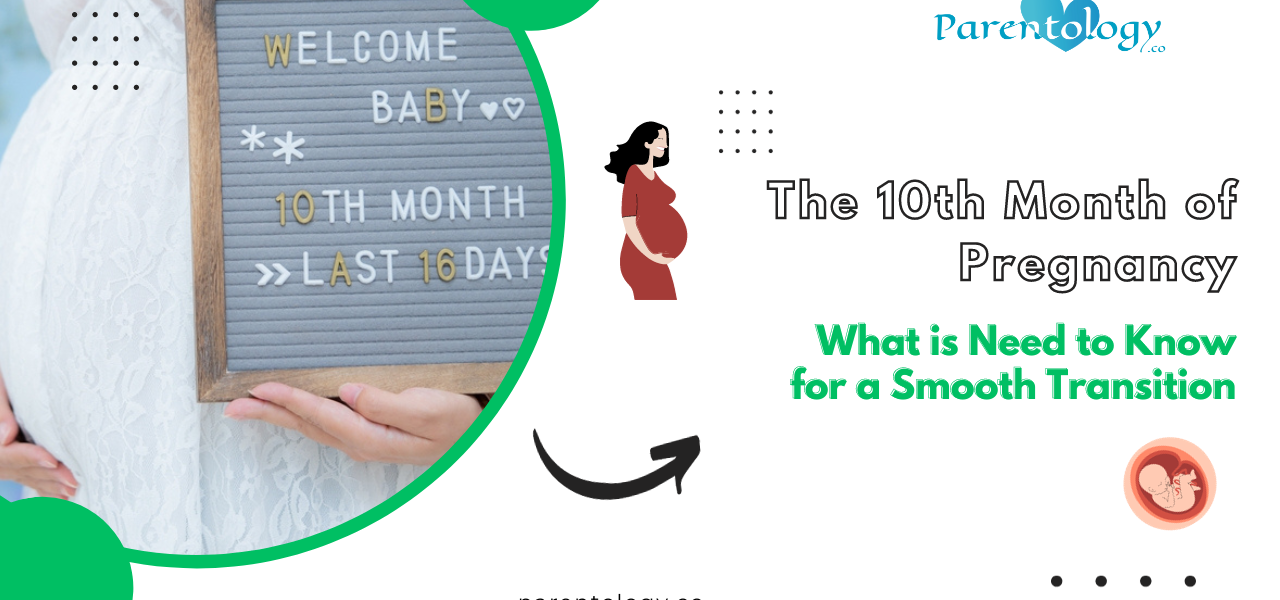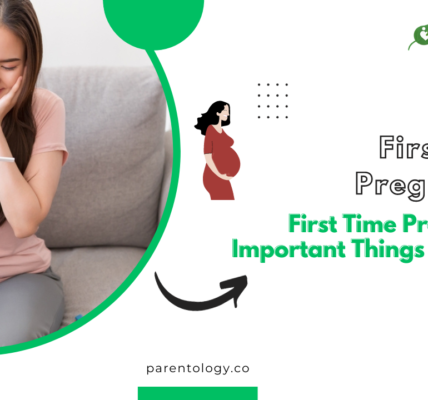The 10th Month of Pregnancy: What You Need to Know for a Smooth Transition
The 10th month marks the final stretch of an incredible journey towards parenthood. As expectant parents eagerly await the arrival of their bundle of joy, this phase brings about crucial developments and preparatory measures.
Understanding the 10th Month of Pregnancy
1. Physical Changes and Fetal Development
In the 10th month, the baby continues to mature, reaching the final stages of growth. Expectant mothers may experience increased discomfort due to the baby’s size, pelvic pressure, and Braxton Hicks contractions as the body prepares for labor.
2. Preparing for Labor and Delivery
This phase involves discussions with healthcare providers, finalizing birth plans, packing hospital bags, and familiarizing oneself with the signs of labor. It’s crucial for parents-to-be to be mentally and physically prepared for the impending birth.
3. Emotional Well-being and Anticipation
As the due date approaches, emotions may range from excitement to apprehension. Expectant parents should focus on maintaining emotional balance, seeking support, and embracing the journey towards parenthood together.


Key Considerations During the 10th Month
1. Final Prenatal Check-ups and Tests
Regular prenatal check-ups in the 10th month allow healthcare professionals to monitor the baby’s growth, assess the mother’s health, and address any concerns before childbirth.
2. Nutrition and Rest
Maintaining a nutritious diet and adequate rest remain paramount. A balanced diet rich in nutrients supports the mother’s health and contributes to the baby’s development.
3. Birth Preparation Classes
Attending birthing classes during the 10th month equips parents with valuable information about labor, delivery techniques, pain management, and postpartum care.
Exploring Weeks 37-41 of Pregnancy(10th Month Pregnancy)
Week 37: The Beginning of the Homestretch
1. Fetal Development:
- The baby’s organs are fully developed, and the baby is considered full-term at this stage.
- The baby continues to grow and gain weight, preparing for life outside the womb.
2. Preparing for Birth:
- Engaging in relaxation techniques, prenatal exercises, and attending childbirth classes aid in readiness for labor.
Week 38: Eagerly Awaiting the Arrival
1. Physical Changes:
- The expectant mother may experience increased discomfort due to the baby’s size and pressure on the bladder.
- Braxton Hicks contractions may become more frequent and intense.
2. Birth Preparation:
- Finalizing the birth plan, packing hospital bags, and discussing labor expectations with healthcare providers are key activities during this period.
Week 39: Nearing the Expected Due Date
1. Fetal Position and Movements:
- The baby continues to move, albeit with less space, and usually settles into the head-down position.
- Expectant parents might notice decreased fetal movements due to limited space.
2. Emotional Readiness:
- Emotions may range from excitement to anxiety as the due date approaches. Communication and emotional support from partners and loved ones are crucial.


Week 40: Approaching the Expected Due Date
1. Signs of Labor:
- Some expectant parents may experience the onset of labor signs such as the mucus plug discharge, contractions, or the rupture of membranes (water breaking).
2. Final Preparations:
- Ensuring readiness for the hospital or birthing center, having a birth support plan, and keeping communication lines open with healthcare providers.
Week 41: Navigating Past the Due Date
1. Expectation Management:
- While some pregnancies extend past the due date, frequent monitoring and communication with healthcare providers are essential.
2. Patience and Support:
- Managing expectations and seeking support from the healthcare team and loved ones while waiting for labor to commence.
The Physiology of the 10th Month
1. Changes in the Mother’s Body
During this phase, the mother’s body undergoes notable changes to accommodate the growing baby. The uterus expands, exerting pressure on nearby organs, leading to increased discomfort, frequent urination, and potential backaches.
2. Fetal Positioning and Movement
By the 10th month, the baby usually assumes the head-down position in preparation for birth. The baby’s movements may decrease slightly due to limited space in the womb.
1. Dealing with Braxton Hicks Contractions
While Braxton Hicks contractions are normal and usually irregular, frequent or intense contractions should prompt a healthcare provider’s evaluation to rule out preterm labor.
2. Managing Swelling and Discomfort
Swelling in the feet and ankles, along with increased discomfort, is common due to the added weight and pressure. Elevating legs, wearing comfortable shoes, and staying hydrated can help alleviate discomfort.
Preparation for Labor and Delivery
1. Birth Plans and Preferences
Expectant parents often create birth plans outlining preferences for labor, pain management, and delivery scenarios. Discussing these plans with healthcare providers ensures alignment and informed decision-making.
2. Understanding the Stages of Labor
Familiarizing oneself with the stages of labor, including early labor, active labor, transition, and delivery, aids in recognizing signs and progression during childbirth.
1. Building a Birth Support Team
Establishing a birth support team, including a partner, doula, or other trusted individuals, ensures emotional and physical support during labor and delivery.
2. Creating a Comfortable Birthing Environment
Personalize the birthing environment with comforting elements such as music, aromatherapy, dim lighting, and familiar items to promote relaxation during labor.
Embracing Emotional and Mental Well-being
1. Partner and Support Network Involvement
Involving partners and support networks helps create a positive birthing environment. Emotional support, encouragement, and involvement during prenatal appointments strengthen bonds.
2. Coping Strategies for Anxiety and Stress
Practicing relaxation techniques, mindfulness, and seeking professional guidance for managing anxiety and stress are crucial for maintaining mental well-being.
1. Stress Management Techniques
Practicing mindfulness, deep breathing exercises, and engaging in activities that promote relaxation aids in managing stress levels during the 10th month.
2. Prioritizing Self-care Practices
Amidst preparations, carving out time for self-care is essential. This may include indulging in hobbies, spending time outdoors, or practicing meditation.


Final Preparations for the New Arrival
1. Setting Up the Nursery
Creating a cozy and functional nursery involves selecting furniture, decorating, and ensuring essential baby items are ready for the baby’s homecoming.
2. Infant Care Basics and Parenting Classes
Attending parenting classes provides valuable insights into newborn care, breastfeeding techniques, and understanding infant cues.
1. Packing Essentials for the Hospital Stay
Ensure the hospital bag contains essential items such as comfortable clothing, toiletries, birth plan documents, insurance information, and necessary items for the baby.
2. Installing and Familiarizing with Baby Gear
Installing and familiarizing oneself with baby gear, including car seats, cribs, and nursing supplies, ensures readiness for the baby’s arrival.
Postpartum Readiness and Expectations
1. Postpartum Care and Support Systems
Preparing for postpartum care involves establishing support systems, understanding post-birth recovery, and seeking guidance for handling postpartum emotions.
2. Embracing the Journey Towards Parenthood
The 10th month symbolizes the final phase of the pregnancy journey, paving the way for the transformative experience of becoming parents and nurturing a new life.
1. Preparing for Postpartum Care
Arrange for postpartum care essentials including nutritious meals, assistance with household chores, and emotional support for the post-birth recovery period.
2. Embracing Parenthood as a Team
Acknowledging and supporting each other’s roles as parents fosters a strong foundation for the journey into parenthood.
FAQs About the 10th Month of Pregnancy
-
What happens during the 10th month of pregnancy?
The 10th month sees the baby’s final growth stages, physical discomfort for the mother, and preparatory measures for labor and delivery.
-
Is it normal to feel anxious during this phase?
Feeling anxious is common. Seeking emotional support, attending prenatal classes, and staying informed can alleviate anxiety.
-
What should be included in the hospital bag for delivery?
Essentials such as comfortable clothing, toiletries, important documents, snacks, and items for the baby should be packed in the hospital bag.
-
How can one relieve discomfort in the 10th month?
Practicing relaxation techniques, prenatal yoga, utilizing pillows for support, and warm baths can help alleviate physical discomfort.
-
When should one contact the healthcare provider during this phase?
Contact the healthcare provider immediately if there are signs of labor, decreased fetal movements, or any unusual symptoms.
-
Are there exercises recommended for the 10th month?
Gentle exercises like walking, pelvic tilts, and Kegels can help prepare the body for labor and ease discomfort.
-
What signs indicate the onset of labor?
Signs of labor include regular contractions, water breaking, cervical changes, and lower back pain that intensifies.
-
How can partners support during the 10th month?
Partners can offer emotional support, attend prenatal appointments, assist in creating a birth plan, and provide practical help.
-
What are the options for pain relief during labor?
Pain relief options include breathing techniques, epidurals, natural remedies, and support from a doula or midwife.
-
What should be expected after the baby’s arrival?
Post-birth, expect initial bonding with the baby, breastfeeding, and adjustments to the new routine. It’s essential to seek postpartum care and support.
By ensuring a comprehensive understanding of the 10th month of pregnancy, expectant parents can embrace this phase with confidence and preparedness. For further guidance and resources on navigating pregnancy and childbirth, visit Parentology.co.
This transformative journey towards parenthood culminates in the 10th month, heralding the dawn of a new chapter filled with love, joy, and the miracle of life.
Infographics:





